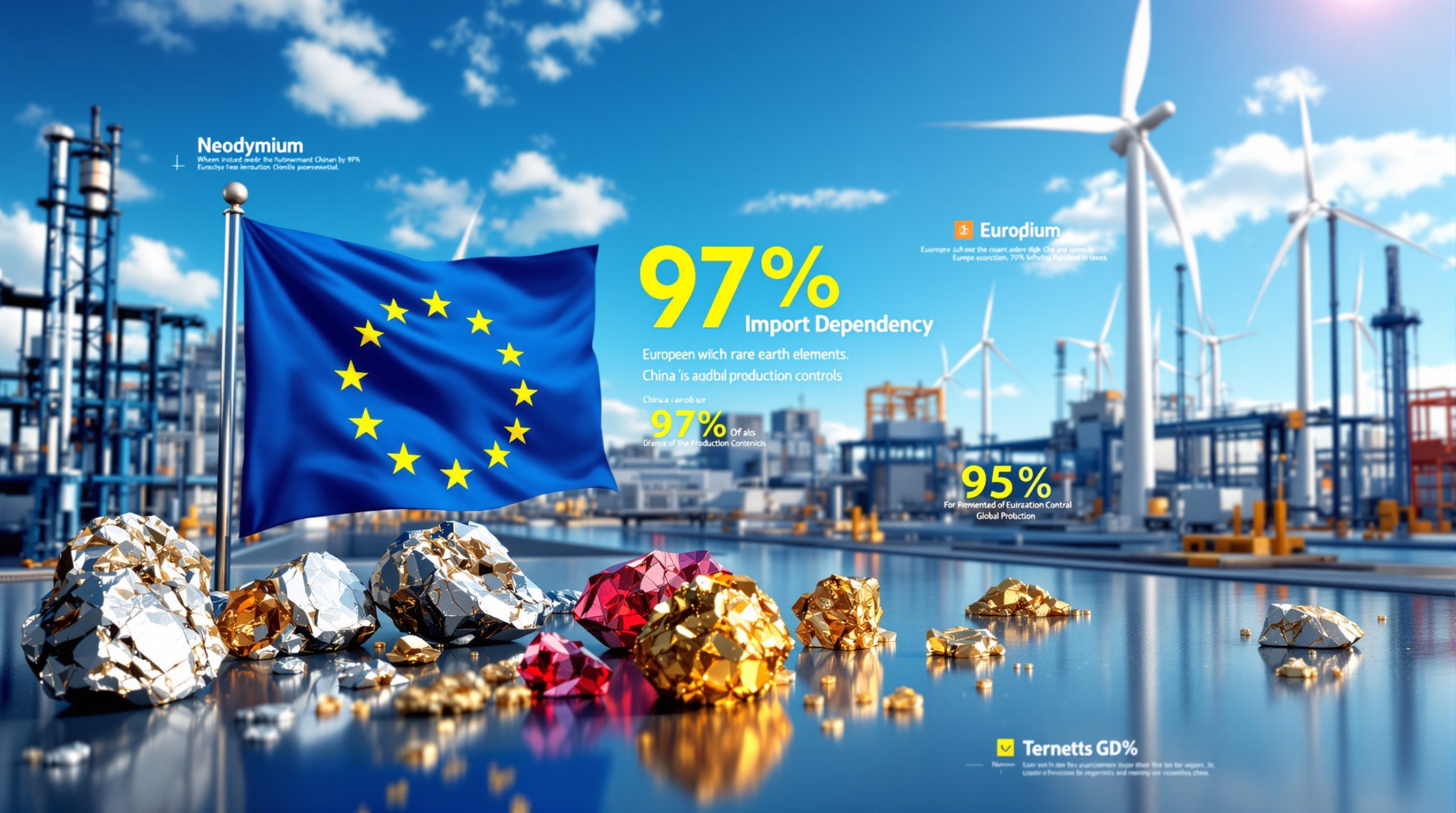What Are Precious Metals Stocks and Why Invest in Them?
Precious metals stocks represent companies involved in various aspects of the metals industry, from exploration and mining to processing and streaming. Unlike physical metals that require secure storage and insurance, these equities offer exposure to the sector through traditional brokerage accounts while potentially providing enhanced returns through operational leverage.
When metal prices rise, mining companies often see their profits increase at a faster rate than the underlying commodity. For example, if a gold producer has an all-in sustaining cost of $1,300 per ounce and gold rises from $2,000 to $2,200, their profit margin expands from $700 to $900 per ounce—a 28% increase in profitability from just a 10% rise in the metal price.
How Do Precious Metals Stocks Differ From Physical Metals?
The precious metals equity market encompasses four distinct company types, each offering different risk-reward profiles:
Producers operate active mines generating revenue from metal sales. These established companies provide direct exposure to commodity price movements with the benefit of existing cash flows.
Developers are advancing projects from discovery through feasibility studies toward production. While they offer higher growth potential, they typically face greater financing challenges and operational uncertainties.
Explorers focus on discovering new deposits and expanding resource estimates. These junior companies represent the highest risk-reward segment, with potential for exponential growth if successful but significant downside risk if exploration efforts fail.
Streaming/royalty companies provide upfront capital to miners in exchange for the right to purchase future production at predetermined prices. According to Wheaton Precious Metals' business model overview, these arrangements typically secure metals at 30-60% below market rates, creating substantial profit margins while avoiding operational risks.
What Drives Value in the Precious Metals Equities Market?
Several key factors determine performance in the precious metals stock sector:
Production costs create the foundation for profitability. According to the World Gold Council, average all-in sustaining costs for gold mining operations reached $1,363/oz in Q1 2024, though this varies significantly between companies. The Silver Institute reports primary silver producers averaging approximately $19.50/oz in production costs during 2023.
Commodity price movements directly impact profit margins. When metal prices exceed production costs, each additional dollar increase flows directly to the bottom line, creating operational leverage.
Resource quality and quantity determines a company's long-term value proposition. Higher-grade deposits generally command premium valuations due to lower extraction costs and longer mine life potential.
Geopolitical considerations significantly impact operational risk profiles. Companies operating in stable mining jurisdictions like Australia, Canada, and the United States generally trade at premium valuations compared to those in regions with unpredictable regulatory environments.
Management expertise in efficiently deploying capital, controlling costs, and navigating project development represents another critical value driver often overlooked by newer investors.
How Does Allocation to Precious Metals Stocks Enhance Portfolio Diversification?
The traditional approach to portfolio construction has evolved significantly in recent years, with alternatives like precious metals gaining greater prominence as diversification tools. Their historically negative correlation with conventional assets during market stress periods makes them particularly valuable when traditional investments falter.
What Is the Recommended Allocation of Precious Metals in Modern Portfolios?
Historical portfolio theory typically suggested allocating 5-10% to precious metals as a hedge against inflation and market volatility. However, more recent research indicates this modest allocation may be insufficient to provide meaningful portfolio protection during significant market dislocations.
According to the World Gold Council's 2023 study "The Relevance of Gold as a Strategic Asset," allocations between 2-10% to gold improved risk-adjusted returns across various portfolio constructions over the 20-year period analyzed. Their research demonstrates gold's effectiveness as a portfolio diversifier, particularly during periods of market stress.
For investors seeking more substantial protection against market volatility, contemporary portfolio construction models increasingly recommend higher allocations to alternative assets. The CFA Institute has published research indicating that alternatives including precious metals can comprise 10-20% of diversified portfolios, though optimal allocation varies by investor risk profile.
This evolution in portfolio theory reflects growing recognition of precious metals' unique properties as non-correlated assets during market stress. According to the Bank for International Settlements, gold demonstrates negative correlation with equities during financial crises, with correlation coefficients ranging from -0.1 to -0.3.
How Do Mining Stocks Perform Compared to Physical Metals?
Mining equities typically deliver amplified returns compared to physical metals during bullish market phases. This operational leverage stems from the fixed-cost nature of mining operations, where revenue increases flow directly to the bottom line once production costs are covered.
Consider these comparative performance figures from late 2024:
| Investment Type | Year-to-Date Return (%) |
|---|---|
| Gold (Spot) | 27 |
| Silver (Spot) | 40 |
| Quality Gold Producer | 116 |
| Leading Silver Developer | 154 |
| Major Streaming Company | 50-95 |
According to research by the Perth Mint, precious metals mining equities typically exhibit beta coefficients of 2.0-3.0 relative to the underlying metals. This means a 1% move in gold price may result in 2-3% moves in mining stock prices, though this varies significantly by company quality, leverage, and market conditions.
While this leverage works favorably during rising markets, it operates equally powerfully during downturns. Mining equities historically demonstrate higher volatility in both directions compared to physical metals.
How Do Precious Metals Stocks Fit Into Modern Portfolio Construction?
Traditional portfolio models based on the 60/40 (stocks/bonds) allocation framework have dominated investment thinking for decades. However, modern portfolio theory increasingly recognizes the limitations of this approach, particularly in a macroeconomic environment characterized by unprecedented monetary policies and correlated asset movements.
Contemporary portfolio construction increasingly incorporates a "60/20/20" model—60% equities, 20% fixed income, and 20% alternatives. Within this alternative allocation, precious metals stocks and physical metals can play a crucial role in reducing overall portfolio volatility while maintaining growth potential.
This diversification benefit becomes particularly apparent during market stress periods. During the 2008 financial crisis, while the S&P 500 dropped approximately 38%, gold gained nearly 5%. Similarly, in March 2020's COVID-related market turmoil, gold demonstrated significantly lower drawdowns than major equity indices.
For investors seeking both diversification and growth potential, a balanced approach to precious metals exposure—combining physical metals with select mining equities—may provide the optimal combination of portfolio protection and upside participation.
Should You Buy, Hold, or Sell Precious Metals Stocks?
Investment decisions in the precious metals sector should align with your specific objectives, time horizon, and risk tolerance. Understanding the distinct approaches to precious metals investing helps determine appropriate entry and exit strategies.
How Should Investors Decide When to Buy or Sell?
Investment decisions should be guided by your primary objective for holding precious metals stocks:
Hedging: If your primary goal is portfolio protection against systemic risks, maintaining a permanent allocation regardless of price movements makes sense. This approach views precious metals as financial insurance rather than a tactical trading vehicle.
Long-term investment: For wealth preservation over decades, accumulating quality producers and streamers during price consolidations while maintaining core positions through market cycles often proves effective. This approach recognizes the historical wealth-preservation qualities of precious metals across centuries.
Trading: For active investors seeking to capitalize on sector momentum, technical analysis provides valuable entry and exit signals. Technical resistance levels, like those seen with silver market squeeze near $50/oz in both January 1980 and April 2011, can inform profit-taking decisions.
Market psychology plays a crucial role in sector performance. According to historical price data from Kitco and the London Bullion Market Association, silver peaked at $49.45/oz on April 25, 2011, before experiencing a severe reversal. This pattern demonstrates the importance of recognizing market euphoria and potential reversal points.
New market participants, including generalist funds and cryptocurrency investors entering the precious metals space, can intensify price rallies but often lack the sector-specific knowledge that encourages holding through volatile periods. This "non-sticky" money frequently exits at the first sign of momentum loss, potentially exacerbating downside moves.
What Risk Management Strategies Are Recommended?
Effective risk management in precious metals investing requires diversification across company types and implementation of specific risk control techniques:
Diversification: Allocate capital across producers, developers, and streaming/royalty companies to balance growth potential with downside protection. Each segment responds differently to market conditions, providing natural portfolio hedging.
Position sizing: Limit exposure to higher-risk explorers and developers, while maintaining larger allocations to established producers and streaming companies with proven cash flows and dividends.
Technical risk controls: Implement trailing stop-loss orders to protect gains during strong uptrends while allowing positions to run. The Australian Securities and Investments Commission defines these as conditional orders that move with the market price, designed to limit losses while allowing gains to run.
Options strategies: Consider covered calls for downside protection in extended rallies. According to the Chicago Board Options Exchange, covered calls involve selling call options against long stock positions, generating income while capping upside potential.
Pair trades: For more sophisticated investors, pair trades—going long one stock while shorting another—can reduce market direction risk while capitalizing on relative performance differences between companies.
Remember that precious metals stocks historically demonstrate higher volatility than the broader market. During the 2011-2015 period, silver declined from its peak of $49.45/oz to approximately $14/oz by December 2015—a 71% decline that produced even larger drawdowns in related equities.
Which Types of Precious Metals Stocks Offer the Best Risk/Reward Balance?
The precious metals equity sector encompasses companies with vastly different risk profiles, operational focuses, and leverage to metal prices. Understanding these distinctions helps investors construct portfolios aligned with their risk tolerance and investment objectives.
Comparing Producers, Developers, and Streaming Companies
Producers provide direct exposure to current metal prices with established operations generating cash flow. According to S&P Global Market Intelligence's analysis of 2024 gold producers, companies are categorized by their all-in sustaining costs (AISC):
- Top quartile producers: AISC below $1,100/oz
- Second quartile: $1,100-$1,300/oz
- Third quartile: $1,300-$1,500/oz
- Bottom quartile: Above $1,500/oz
Companies in the top quartile, with production costs significantly below prevailing market prices, offer the most attractive margin expansion potential in rising price environments while providing downside protection during corrections.
Developers and explorers represent higher-risk, higher-reward opportunities. These companies typically lack current revenue but offer substantial upside if they successfully advance projects toward production or make significant discoveries. Risk factors include permitting challenges, financing constraints, and technical development issues.
Streaming and royalty companies offer an attractive middle ground, combining significant upside exposure with reduced operational risk. These entities provide upfront capital to miners in exchange for the right to purchase metals at reduced fixed prices or receive a percentage of production.
According to Wheaton Precious Metals' Q2 2024 financial results, their business model generated an 82% cash operating margin on revenue of $324 million. This capital-light model avoids the substantial ongoing expenditures required by mining operations while maintaining exposure to production upside and exploration potential.
How to Identify Quality Stocks in the Sector
Evaluating precious metals companies requires analysis across several dimensions:
Cost structure: Prioritize companies with production costs in the lower half of the industry cost curve, providing margin cushion during price corrections.
Balance sheet strength: Focus on companies with minimal debt, substantial cash reserves, and conservative capital allocation policies to weather market volatility.
Jurisdiction quality: Companies operating in mining-friendly regions like Australia, Canada, and Nevada typically face fewer permitting delays, regulatory surprises, or resource nationalism issues.
Management track record: Seek leadership teams with demonstrated success in project development, operational efficiency, and capital discipline through multiple market cycles.
Resource quality: Higher-grade deposits generally yield better economics, longer mine lives, and greater resilience during price downturns.
The ASX hosts numerous quality precious metals companies, including:
-
Newmont Corporation (ASX: NEM) – World's largest gold producer following Newcrest acquisition; dual-listed on ASX
-
Northern Star Resources (ASX: NST) – Major Australian gold producer with operations in Western Australia and Alaska
-
Evolution Mining (ASX: EVN) – Australian gold producer with operations in Australia and Canada
While BHP Group (ASX: BHP) and Rio Tinto (ASX: RIO) are prominent ASX-listed miners, they have limited direct precious metals exposure, focusing primarily on iron ore, copper, and other industrial commodities.
What Are the Practical Steps to Start Investing in Precious Metals Stocks?
Developing a systematic approach to precious metals investing helps avoid common pitfalls while maximizing long-term returns. Following a structured process enables investors to build positions methodically while managing sector-specific risks.
Step-by-Step Approach
1. Define Your Investment Objectives
Begin by clarifying your primary goals for investing in precious metals stocks:
- Portfolio insurance against systemic risks
- Growth potential through operational leverage
- Diversification from traditional financial assets
- Speculation on sector-specific catalysts
Your objectives will inform appropriate allocation sizes, company selection criteria, and holding periods.
2. Determine Appropriate Allocation
Based on your risk tolerance and investment objectives, determine what percentage of your portfolio to allocate to precious metals equities:
- Conservative approach: 5-10% total allocation to the precious metals sector, with 2-5% in mining equities
- Moderate approach: 10-15% sector allocation with 5-8% in mining equities
- Aggressive approach: 15-25% sector allocation with 8-15% in mining equities
Within this allocation, further diversify across company types to balance risk and reward potential.
3. Research Company Fundamentals
Conduct thorough due diligence on potential investments:
- Review financial statements, focusing on production costs, debt levels, and cash flow generation
- Examine resource quality, including grade, reserve life, and expansion potential
- Assess jurisdiction risk in operating regions
- Evaluate management track record and insider ownership
- Compare valuation metrics against peer companies
ASX requires continuous disclosure under Listing Rule 3.1, meaning material information must be released immediately to the market, providing investors with access to current company developments.
4. Build Positions Strategically
Rather than deploying capital all at once, consider a staged approach:
- Establish core positions in quality producers and streaming companies
- Add to these positions during sector pullbacks
- Allocate smaller amounts to higher-risk developers and explorers
- Maintain cash reserves for opportunistic purchases during major corrections
5. Implement Risk Management Controls
Protect your capital through disciplined risk management:
- Predetermine position size limits for different company types
- Establish price targets for partial profit-taking in extended rallies
- Set trailing stops to protect gains while allowing upside participation
- Review positions regularly against your initial investment thesis
6. Monitor the Macro Environment
Stay informed about factors affecting the broader precious metals sector:
- Central bank policies and interest rate trends
- Currency movements, particularly in the US dollar
- Inflation data and expectations
- Geopolitical developments affecting safe-haven demand
- Institutional fund flows into the sector
The London Bullion Market Association reported record gold trading volumes in Q3 2024, with average daily volumes exceeding 20 million ounces, indicating increased institutional participation in the precious metals market.
Frequently Asked Questions (FAQs) About Investing in Precious Metals Stocks
What Percentage of My Portfolio Should Be Precious Metals Stocks?
The optimal allocation varies based on your investment objectives, risk tolerance, and market conditions. Traditional portfolio theory suggested 5-10% allocation to precious metals as a whole, with stocks representing a portion of this exposure.
However, the CFA Institute has published research indicating that alternative assets including precious metals can comprise 10-20% of diversified portfolios for enhanced diversification benefits. Within this allocation, investors might consider splitting exposure between physical metals and mining equities based on their risk appetite.
During periods of economic uncertainty or elevated inflation concerns, increasing allocation toward the higher end of your predetermined range may provide additional portfolio protection.
Are Mining Stocks More Volatile Than Physical Metals?
Yes, mining equities typically demonstrate significantly higher volatility than the underlying metals. According to research by the Perth Mint, precious metals mining equities typically exhibit beta coefficients of 2.0-3.0 relative to the underlying metals.
This amplified volatility works in both directions—mining stocks generally rise faster during bullish periods but also decline more sharply during corrections. This characteristic makes them potentially more suitable for investors with higher risk tolerance and longer time horizons.
Streaming and royalty companies tend to exhibit lower volatility than pure mining operations while still providing leverage to metal prices, making them an attractive option for more conservative investors seeking sector exposure.
How Do I Choose Between Gold, Silver, and Diversified Miners?
Each metal and company type offers distinct characteristics:
Gold miners typically provide more stability than silver operations, reflecting gold's traditional role as a monetary metal and safe-haven asset. Gold producers generally have larger market capitalizations, greater liquidity, and more diverse operations.
Silver companies often deliver higher leverage to rising precious metals prices due to silver's dual role as both monetary and industrial metal. During bull markets, silver typically outperforms gold on a percentage basis, potentially providing greater upside for related equities.
Diversified miners with exposure to multiple metals offer natural hedging against metal-specific price fluctuations. Companies producing gold alongside copper, silver, or other metals may demonstrate more stable performance across different economic environments.
For balanced exposure, consider allocating across all three categories, with position sizes reflecting your risk tolerance and market outlook.
What Are Common Pitfalls for Beginners?
Newcomers to precious metals investing frequently encounter several challenges:
Overconcentration in explorers: Early-stage companies promise dramatic returns but carry significantly higher failure rates. Limit exposure to speculative positions and build core holdings in established producers.
Ignoring jurisdiction risk: Companies operating in regions with unstable regulatory environments, resource nationalism tendencies, or security concerns may face unexpected operational disruptions regardless of deposit quality.
Neglecting cost structure analysis: During bull markets, even high-cost producers can deliver strong returns. However, these companies become vulnerable during price corrections, often experiencing disproportionate declines.
Chasing performance: Jumping into stocks after substantial rallies increases downside risk. Develop the discipline to accumulate positions during sector consolidations rather than emotional buying during euphoric price moves.
Overlooking technical analysis: While fundamental analysis determines what to buy, technical analysis helps identify when to buy. Learning basic chart patterns and support/resistance levels improves entry timing.
Building Wealth Through Strategic Exposure to Precious Metals Stocks
Precious metals equities offer a compelling combination of portfolio diversification benefits and growth potential when approached with a disciplined investment strategy. Their historical performance demonstrates the capacity to deliver substantial returns during bullish metal environments while providing portfolio protection during periods of economic uncertainty.
The sector's evolution continues to create new opportunities for investors willing to conduct thorough research and maintain a long-term perspective. By understanding the distinct characteristics of producers, developers, and streaming companies, investors can construct portfolios tailored to their specific risk tolerance and investment objectives.
Successful precious metals investing requires balancing fundamental analysis with technical considerations. Quality companies with strong management, low production costs, and assets in stable jurisdictions provide the foundation for long-term wealth creation in the sector.
Remember that while short-term market movements are impossible to predict consistently, the underlying fundamentals of precious metals—limited supply, monetary properties, and industrial applications—support their long-term value proposition. By focusing on these enduring characteristics rather than day-to-day price fluctuations, investors position themselves to benefit from the sector's wealth-preservation and growth potential.
As you build your precious metals equity portfolio, maintain discipline through market cycles, accumulating quality positions during corrections and taking partial profits during extended rallies. This balanced approach, combined with appropriate portfolio allocation and gold market investment strategies, provides the optimal framework for long-term success in this dynamic and rewarding sector.
For those interested in understanding potential future movements, recent gold prices analysis suggests continued strength in the precious metals sector. Many investors are also exploring the benefits of inflation hedge in gold as economic uncertainties persist. Looking ahead, the latest gold price forecast indicates potential for further gains driven by macroeconomic factors.
Searching for the Next Major Precious Metals Discovery?
Discovery Alert's proprietary Discovery IQ model instantly notifies investors about significant ASX mineral discoveries, turning complex data into actionable insights before the broader market reacts. Understand why major discoveries can generate substantial returns by exploring our dedicated discoveries page and position yourself for potential high-growth opportunities.




